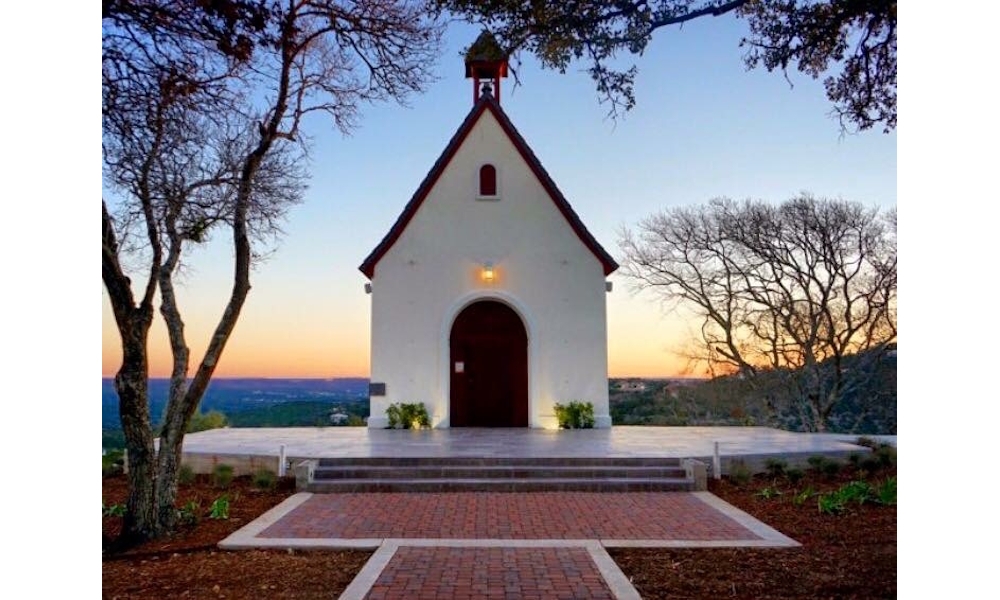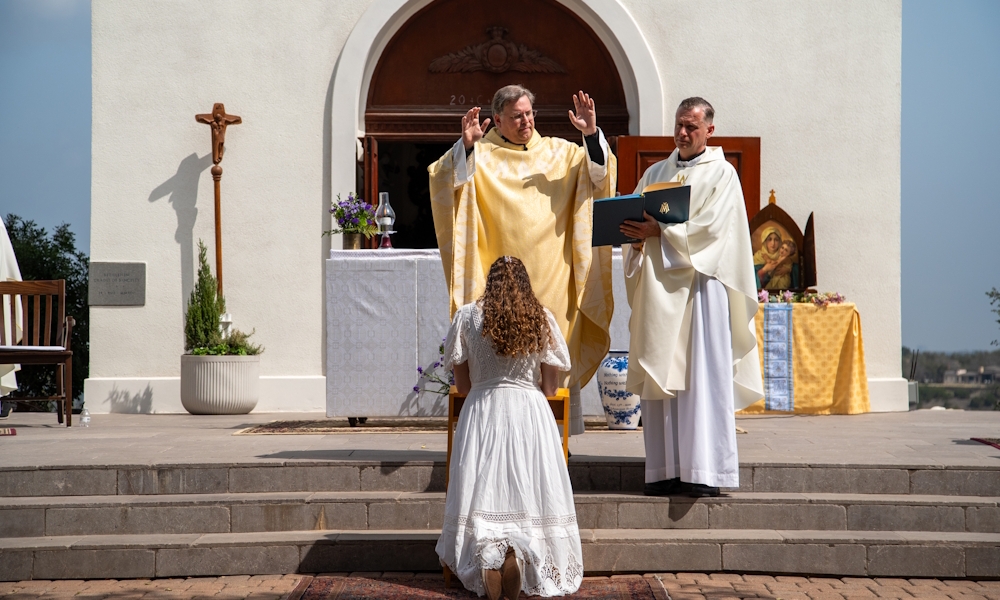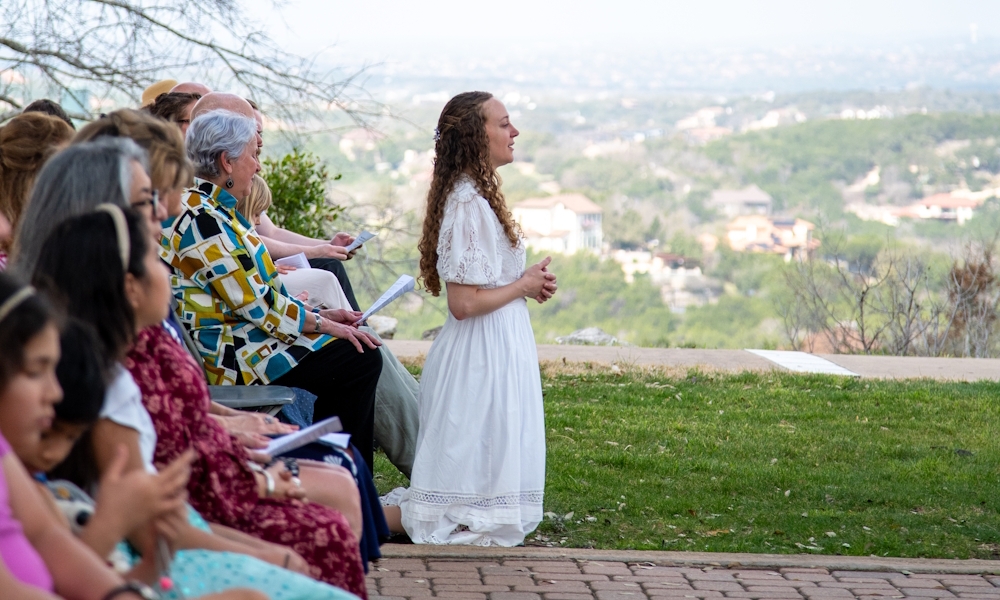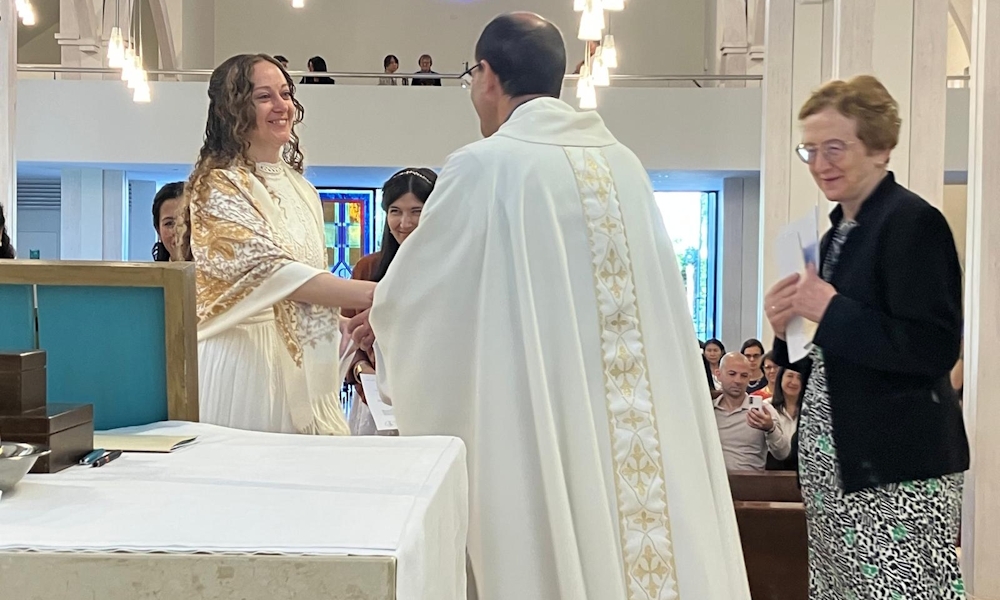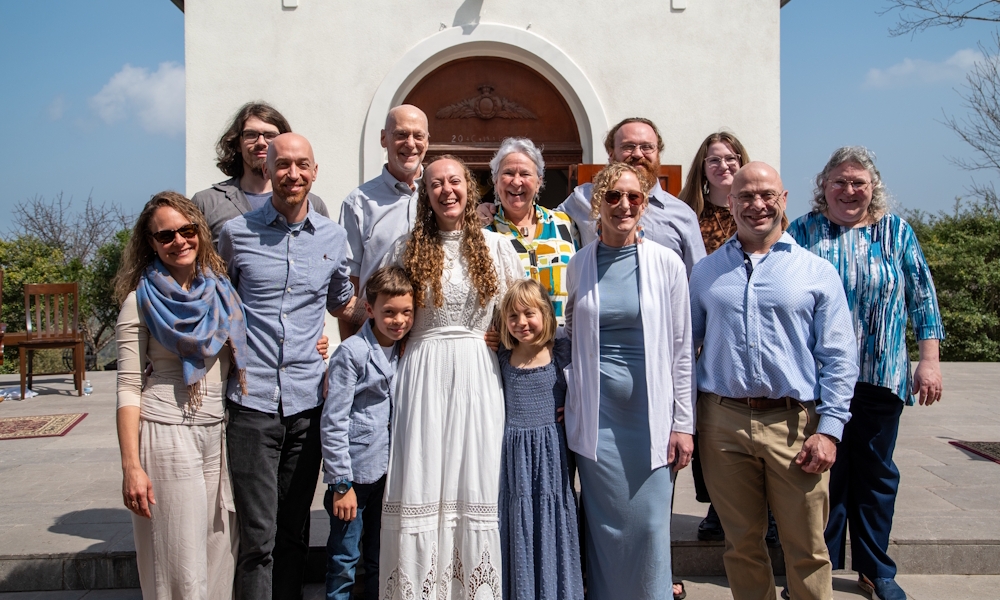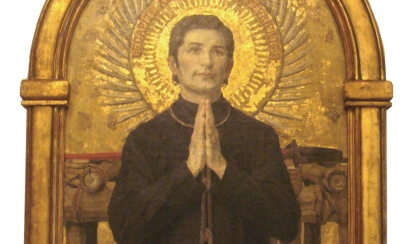
Austinite is the first Lady of Schoenstatt in the United States
The Schoenstatt Apostolic Movement was founded in Germany in 1914. The movement seeks to share with the world their deep love of Mary and their commitment to living the Gospel. They are currently present in 49 countries around the world.
The Schoenstatt Apostolic Movement was founded in Germany in 1914. The movement seeks to share with the world their deep love of Mary and their commitment to living the Gospel. They are currently present in 49 countries around the world.
In Austin, the Schoenstatt community established and dedicated the Marian Shrine of Our Lady of Schoenstatt in 2014; it is a replica of the original shrine in Germany. Over the last 11 years, the Austin Schoenstatt community has sought to offer pilgrims an encounter with God through prayer, catechesis, and the sacraments. The community has grown to include five Schoenstatt priests and, most recently, one Lady of Schoenstatt.
Last February, Rachel Gardner, who was born and raised in Austin, made promises of poverty, chastity, and obedience in the Community of the Secular Institute of Our Lady of Schoenstatt. Within the greater Schoenstatt Movement, the Ladies of Schoenstatt live out their vocation as virgins consecrated to Christ who serve him through their various professions in the world. Gardner is the first woman in the United States to make this final consecration with the greater Schoenstatt Movement.
The call
Gardner grew up in a traditional Catholic home with a love for prayer.
“Back when Dripping Springs was a small country town and my parents led the Sunday morning choir at St. Martin de Porres Parish, I began to feel at home in the church and close to Christ,” she said. She realized she was different from her peers in that she loved to pray.
“But also, in my closest circle I had an atheist friend with no religious background, a Jewish friend, Catholic friends, and non-Catholic Christian friends,” she said.
Gardner was a student at the University of Texas at Austin when several young men first arrived from Chile as Schoenstatt missionaries. She was intrigued by the nature of the missionary life and perplexed because they were hanging out with students who were already Catholic.
For them, “missionary” meant helping students at a large secular university strengthen their faith through Mary. The sacrifice of the missionaries also intrigued her.
The Schoenstatt Movement includes religious priests and sisters, whereas the Ladies are consecrated lay women who, as intentionally founded from the start in 1946, wear regular clothes. The women work in different professions to bring Christ’s presence to the world.
“People see an external sign of religiosity, and that changes the dialogue,” Gardner said. “If I’m not wearing a habit, we can get into a conversation and go back and forth.”
She said the world does need visible signs to be a testimony of Christ; she just knew she wasn’t called to wear a habit.
When she met a Chilean Lady of Schoenstatt who worked as a psychologist and theologian at a university and wore regular clothing, she was intrigued. “That wasn’t a category in my mind,” she said. “And then I thought, ‘Uh-oh, I think I’m like you!’”
Walking with Mary
Gardner described the next period of her life as terrifying.
“It was a ‘good’ terrifying,” she said. “It’s like that moment when the groom cries when he sees his bride coming to the altar. It’s like you realize the weight of what’s happening and how much God wants for our lives.”
She credited the Schoenstatt Marian consecration, known as the Covenant of Love, as stabilizing her. “It was the crucial element,” she said, “The Mother of God is like, ‘I’ve got you. I’m going to take care of it!’”
Gardner felt she had a calling to bring Jesus into parts of the world that try to exclude him. “One of the Ladies I know is a doctor, and she publishes papers in a field that doesn’t honor God,” she said. “I work in mental health, which is pretty anti-Jesus right now. Psychology needs people who can be a bridge between science and God.”
The Schoenstatt Movement has a saying that people should become “irresistible question marks” in everyday life.
“It provokes questions,” she said. “We call it ‘the apostolate of being.’ Without the external signs, people should sense there’s something different. You should be able to point to God in whatever field you’re in.”
This idea of pointing toward God through their lifestyle is for them to be a living, modern reflection of the Mother of God. Schoenstatt understands Mary as Christ’s permanent companion and collaborator in his work of redemption, so they likewise strive to collaborate with Christ through their virginal vocation in the world.
Schoenstatt in Austin
Gardner, along with other volunteers, also helps welcome pilgrims to the Marian Shrine on Addie Roy Road in Southwest Austin.
“The shrine has a grace to bring inner transformation and healing. It’s not a parish. It’s a place of pilgrimage for people and groups to be restored and bring that back to their home parish,” she said.
After her final consecration, the word is “out” a little more about Gardner’s vocation. There is flexibility to discern whether a vocation is shared or not. It just depends on what God is calling that particular Lady of Schoenstatt to do.
There is now a second woman in the Diocese of Austin who has made her first consecration in the community. “My dream is that I’ll be surrounded by, like, 30 ladies,” Gardner said. “We just have to see what the Lord wants to do!”
She trusts that the Blessed Mother will look after the community just as Mary has taken good care of her at every stage of the adventure.
For more information about the Schoenstatt Movement in Austin, visit schoenstatt-austin.us.

